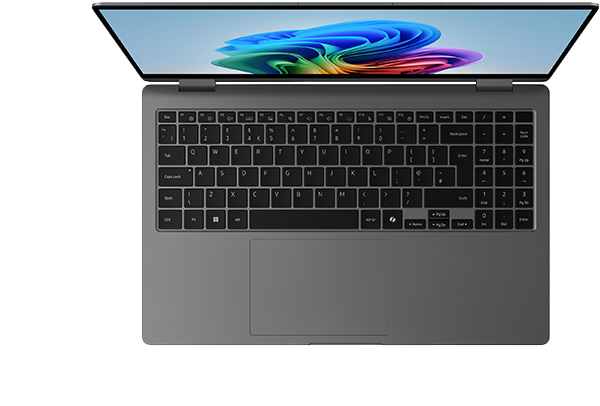Planning for Device Deployment: Getting configuration right from the start

Last week I talked about the differences between Intel, AMD and Snapdragon processors as part of the selection process for a device refresh (I went Snapdragon if interested, the reason was primarily for battery life and the geek in me wanted to play with a Snapdragon laptop). Obviously, that is only one of the factors to consider when choosing a device, you also need to consider form factor, connectivity, durability, do you go new or 2nd life, what is the environmental impact over the life of the equipment etc.
However, choosing the right hardware is only the beginning of a successful IT rollout. Once laptops and associated devices are selected, the next challenge is ensuring they’re deployed efficiently, securely, and with minimal disruption to users—whether they’re working in the office, remotely or hybrid.
Modern deployment isn’t just about logistics. It’s about delivering a consistent, well-configured experience that supports productivity from day one. With tools like Microsoft Intune and Windows Autopilot, organisations can streamline this process and reduce the burden on internal IT teams and minimise the impact on the employee.
Laying the Groundwork: Preparing Intune for Deployment
Before any devices are handed out, it’s essential to configure Microsoft Intune correctly. This cloud-based endpoint management platform allows IT teams to manage devices, enforce security policies, and deploy applications—all from a central location.
Key steps in preparing Intune include:
- Setting up the Intune tenant and integrating it with Entra ID.
- Creating compliance policies to enforce standards such as password complexity, encryption, and antivirus protection.
- Defining configuration profiles for Wi-Fi, VPN, certificates, and other essential settings.
- Establishing endpoint security policies, including Defender Antivirus, BitLocker encryption, and firewall rules.
- Organising devices into logical groups (e.g., by department or location) to enable targeted policy and application deployment.
This foundational setup ensures that every device enrolled in Intune receives the correct configuration automatically, reducing manual effort and ensuring consistency across the organisation.
Zero-Touch Provisioning with Windows Autopilot
Windows Autopilot transforms the way devices are provisioned. By pre-registering devices with your organisation’s tenant, Autopilot enables them to be shipped directly to users and configured automatically when powered on.
Autopilot profiles define how the device is set up during the out-of-box experience, including:
- Whether the setup is user-driven or self-deploying
- Which applications and policies are applied
- Whether the device joins Azure AD or Hybrid AD
- Custom branding and welcome messages
This approach is particularly valuable for remote users, allowing them to receive a fully configured device without needing IT intervention.
Application Packaging and Deployment
Ensuring users have access to the right applications is a critical part of deployment planning. This involves:
- Identifying required applications for each user group
- Packaging apps in compatible formats (e.g., Win32, MSI)
- Configuring silent install parameters and managing dependencies
- Assigning apps to device or user groups for automatic deployment via Intune
Thorough testing is essential—not just to confirm installation success, but to ensure applications function correctly within the configured environment.
Testing and Validation
Before rolling out to the wider organisation, a pilot phase should be conducted. This allows IT teams to:
- Validate Autopilot provisioning and Intune policy application
- Confirm application installations and performance
- Simulate both office and remote user scenarios
- Identify and resolve any issues before scaling up
Feedback from pilot users helps refine the deployment process and ensures a smoother experience for everyone.
Deployment Planning for Office and Remote Users
A phased and well-communicated deployment plan is key to success. Office-based users may receive devices in person, with support available on-site. Remote users should receive pre-configured devices shipped to their location, along with clear setup instructions and access to support channels.
- Effective planning includes:
- Scheduling rollouts by department or location
- Providing onboarding materials and training
- Monitoring device health and compliance post-deployment
- Offering ongoing support and updates via Intune
Decommissioning and Removing Old Devices
As new devices are deployed, it’s important to have a clear process for removing and decommissioning old hardware. This ensures security, compliance, and proper asset management.
For office-based users, this can be managed centrally:
- Devices should be collected and securely wiped using approved tools.
- Any residual data should be removed, and the device reset to factory settings.
- Devices can then be reallocated, recycled, or disposed of according to company policy.
For remote users, the process requires more coordination:
- What data is being held on the devices – and how do you ensure integrity of your data bearing assets?
- Remote wipe capabilities via Intune can be used to ensure data is erased even if the device isn’t physically returned immediately. This is not however a substitute for proper data erasure
- Devices can be returned via courier or drop-off points.
- Do you arrange the collection of old device at the same time as the new device is delivered, or do you delay the collection, to allow the user time to swap the laptop over in their home office.
In both cases, it’s essential to update asset records, remove devices from Intune and Entra ID, and ensure any licensing or security tokens are revoked, and if the devices are beyond reasonable use and at the end of their lifecycle, you need to ensure you dispose of the devices appropriately.
Working with a Deployment Partner
Managing device deployment end to end can be complex and time-consuming—especially for organisations with limited internal IT resources or large, distributed teams. This is where working with a trusted deployment partner can make a significant difference.
A partner can:
- Hardware supply
- Handle Intune and Autopilot setup and configuration
- Package and test applications
- Manage logistics for device delivery and collection
- Provide support for both office and remote users
- Ensure secure decommissioning of old devices
By outsourcing the deployment process, organisations can reduce risk, accelerate rollout timelines, and ensure a consistent experience for all users—without overloading internal teams.
Modern device deployment is about more than just distributing hardware. It’s about delivering a secure, consistent, and user-friendly experience across the organisation. With the right preparation in Intune and the automation offered by Autopilot, IT teams can ensure every device is ready to go—whether it’s being used in the office or at home.
If you're reviewing your deployment strategy or preparing for a refresh, now is the time to ensure your configuration and management tools are set up to support a smooth rollout.
Lee Gatland
Head of Technology Services
Related Blogs

Overcoming Technology Challenges in Midsize Law Firms
Midsize law firms play a critical role in the UK legal landscape. However, as highlighted in the 2025 UK Midsize Law Firm Priorities Report by Actionstep, many of these firms are facing several technology-related challenges.

Zero Touch Deployment meaning (in simple terms)
What is a Zero Touch Deployment? What does it mean?
